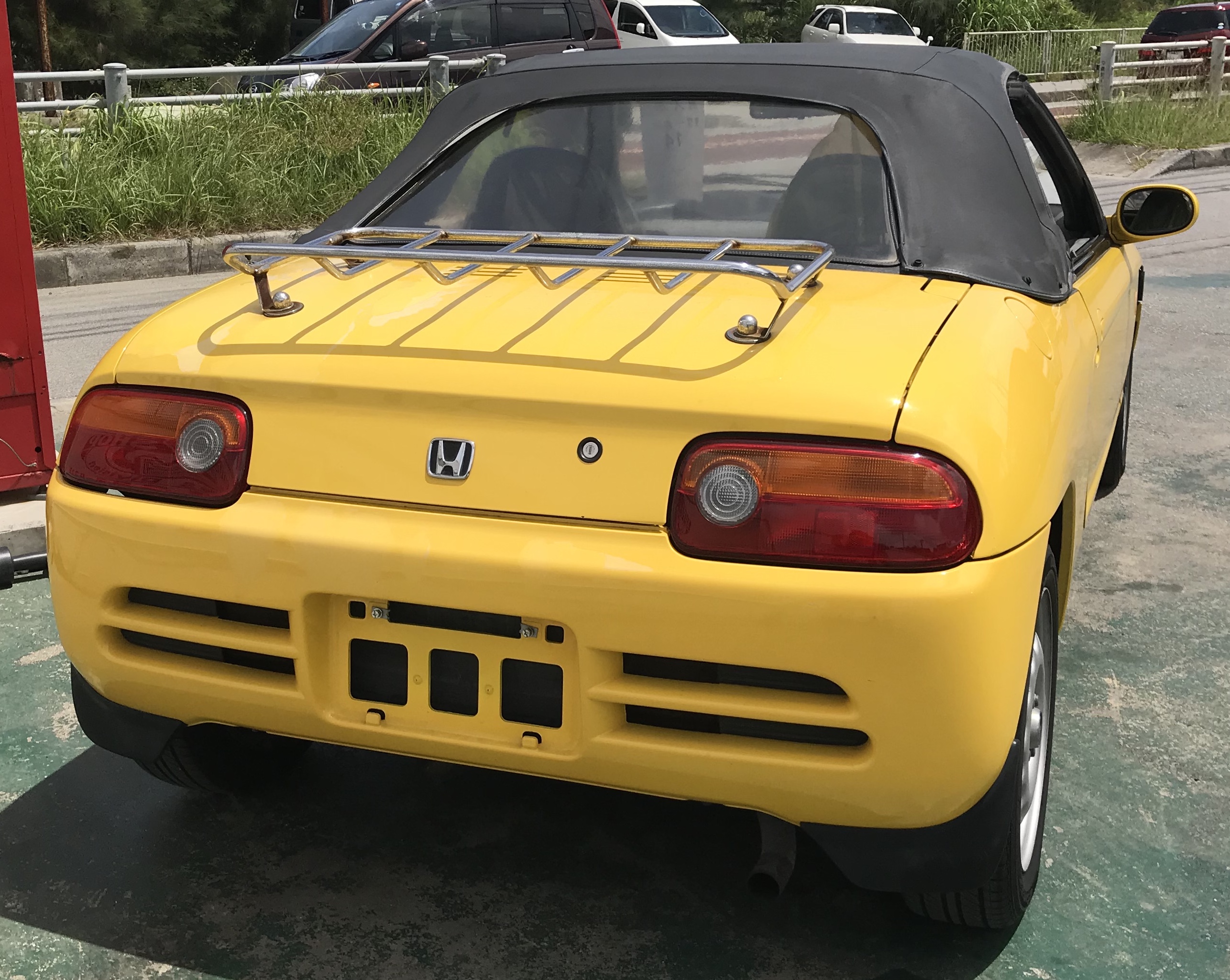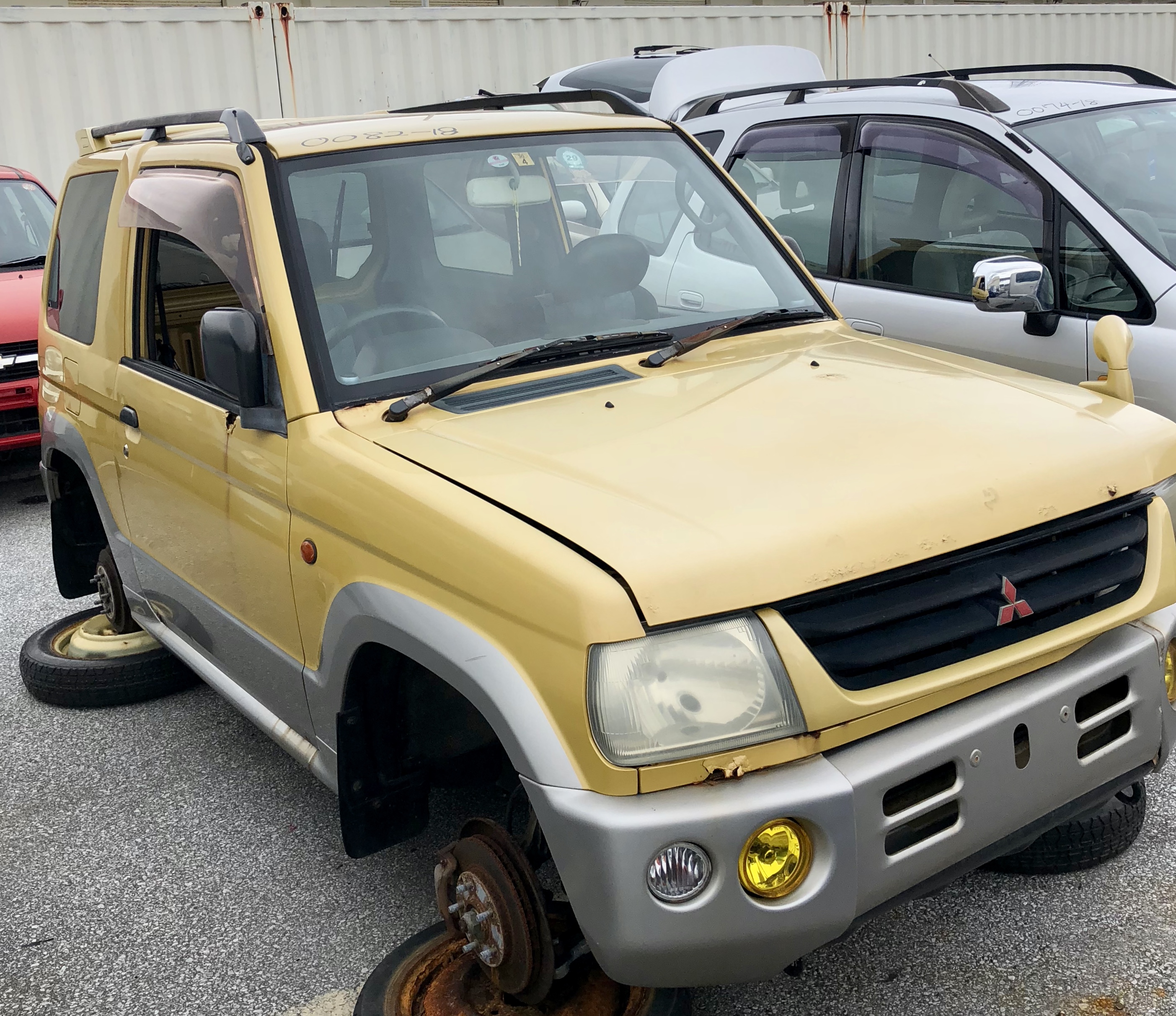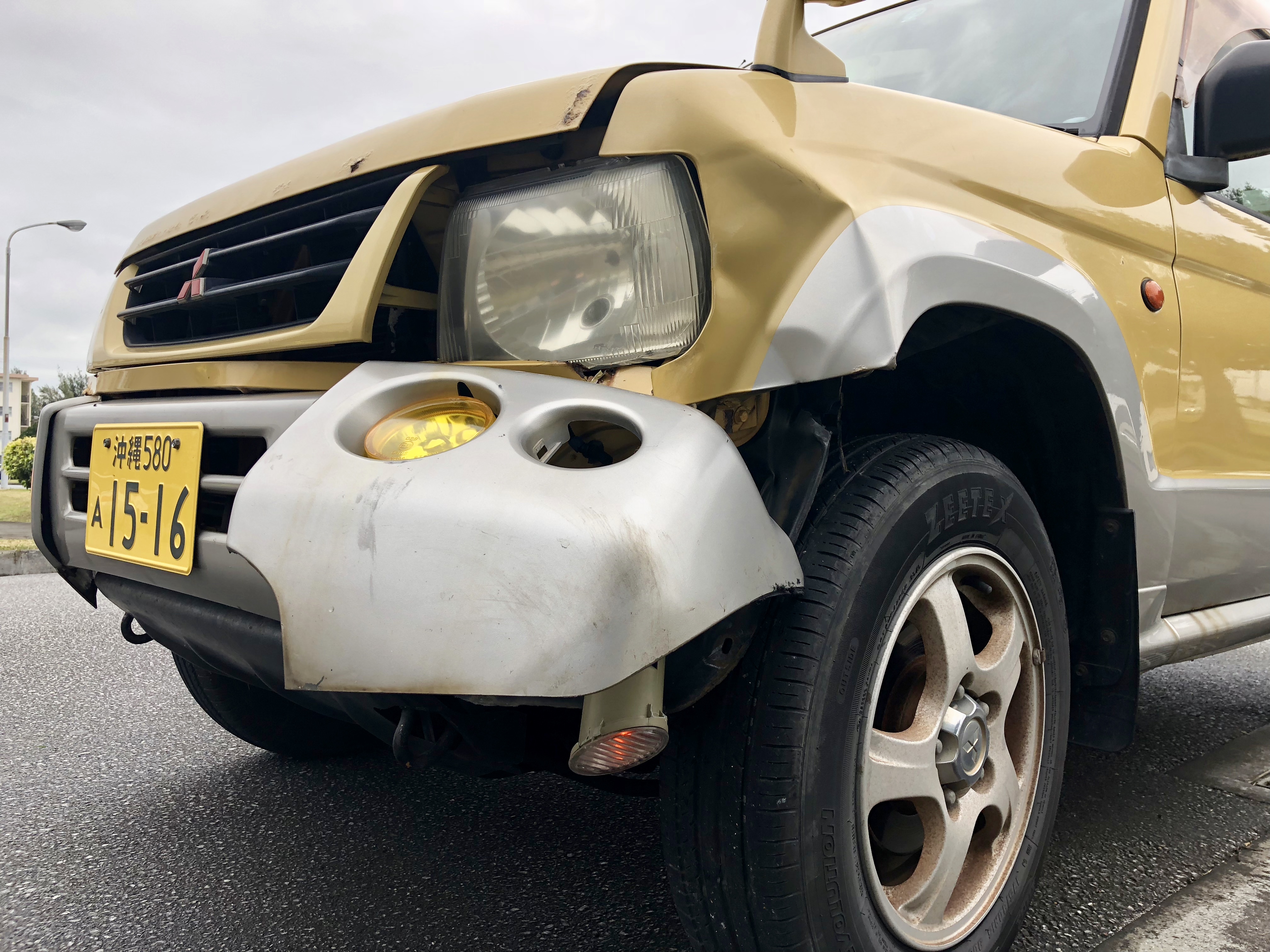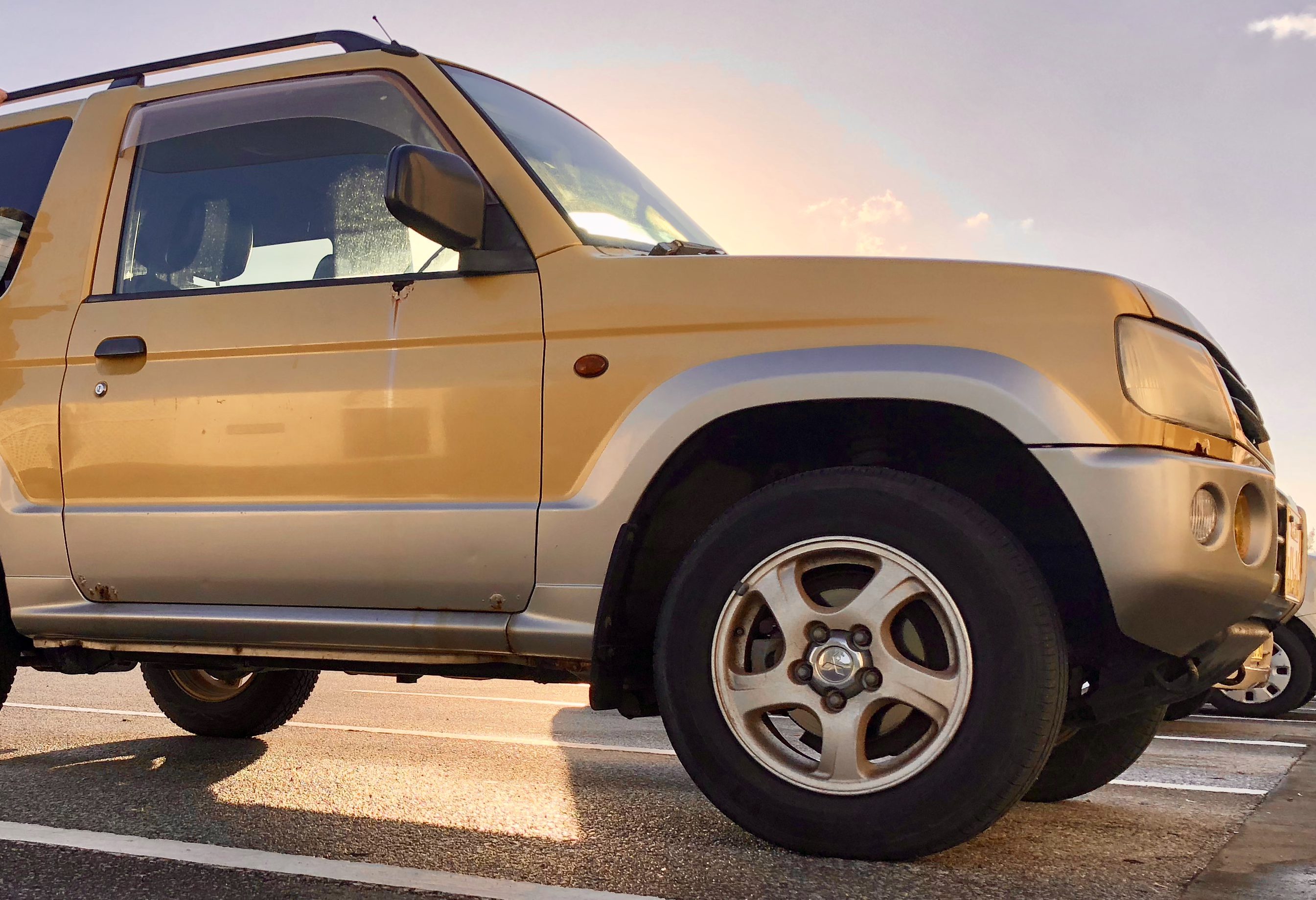Kei cars are cramped, uncomfortable, under powered, and a blast to drive. Following untimely destruction of my Pajero Mini, I wanted to get something more exotic. Before I arrived at Okinawa, I read Ken Saito’s review of the new S660 and loved the idea of a Kei coupe convertible. I was struggling to decide between a hard top Suzuki Cappuccino or a mid-engined Honda Beat. I showed my wife pictures of both and she advised “I don’t care.” I decided to get the Beat.
You might not love Kei cars. You probably hate them. That’s okay. You’ll have a similar process to purchase your Okinawan dream car, maybe a classic Nissan Skyline GT-R or Diesel 4WD Toyota Land Cruiser, from mainland Japan. From start to finish, it took about two months. If you were more driven, you could get it done much quicker.
I looked at Japanese auction sites and Goo-net, but decided to work with a local dealer. I contacted Auto Shop Z. For $500, which they require as a deposit, they’ll do all of the translation, coordination, and paperwork to bring a car from mainland Japan to Okinawa. On April 29, I drove to Auto Shop Z with my $500 deposit. We talked about what kind of car I was looking for, any special requirements, and my budget. If we they could find the car on the island, we’d save the shipping cost and I’d have it quicker. Unfortunately, the local Honda Beats were in very poor shape. There were two listed on Goo-net, but both had close to 200K kilometers and had excessive body rust. I also preferred a Honda Beat with OEM parts and the ridiculous zebra patterened seats. And it couldn’t be teal. The Beat looks terrible in teal. I searched on Goo-net and found several Beats that appeared to be in good condition, not teal, and were in my price range. I sent the links to Auto Shop Z and they contacted all of the dealers.
On May 12, I picked up a loaner car from Auto Shop Z. They let me keep it until I picked up my Honda Beat. While I was in, we looked at the responses from the dealers. Regrettably, none of the four seemed interested in the hassle of shipping a car to Okinawa. Two of them said no and the other two quoted significantly increased prices over what was listed on goo-net. Shucks.
On May 22, Auto Shop Z contacted me to see if I was interested in another Beat listed on goo-net. A nice yellow beat with 84k kilometers. When I had searched goo-net, I had ignored the car since the listing hadn’t been updated in four months and I assumed it was no longer available. It was listed as goo-net certified with a 3 star interior and 3 star exterior. The dealer had been unable to sell the car for a while, which could have been a warning that it had some issues, but was interested and willing to ship the car to Okinawa.
On May 25, I paid 475,000 yen for the car and shipping costs. Two minor annoyances here — the shipping company misquoted to price, which I paid an additional 7,000 yen after the car arrived, and the dealer notified Auto Shop Z that the temperature gauge didn’t work after I paid and they were preparing to ship. Still, not enough to derail my multi-month dream of owning a Honda Beat!
On Jun 8, the car arrived on Okinawa. I agreed to have Auto Shop Z take care of the maintenance, JCI, road tax, and registration. They sent me a picture of the title which I used to change my insurance policy to cover the Honda Beat, instead of the Pajero Mini that I junked. I also got a Letter of Attorney from JSVRO at Camp Foster so that Auto Shop Z could register the car. I brought my insurance and Letter of Attorney to Auto Shop Z on 12 Jun.
On Jun 18, the car was ready for pickup! I paid 48,160 yen for the cost of maintenance, JCI, road tax, and registration, plus the additional 7,000 yen for the shipping misquote. My car had A-plates and was ready to drive. I smiled gleefully as I shifted gears with the revving loudly behind me attempting to muster all 63-hp to merge onto the expressway.
My joy was only tempered slightly by the many issues the car had. The car was dirty. It wasn’t the end of the world, but I would have thought the dealership would clean it more thoroughly before shipping it. Of course, it was a well used, 27 year old car. It was a given that the body had dents, there were chips in the paint, and the convertible top was a little discolored and some of the threads were worn. However, the clear coat was falling off fo the trunk and rear bumper. The paint had looked to be in much better condition in the photos. The A/C was weak. It wasn’t just the temperature gauge that didn’t work, the fuel gauge was also erroneously displaying full. I decided to fill the car up when I got home, only to discover that the fuel door was stuck. The radio didn’t get any FM signal. I didn’t mind the radio issues on the drive home, because the engine was screaming at 6,000 rpm in 5th gear just to maintain 80 kph, and that was music to my ears. I didn’t realized that there was no power steering in the Honda Beat, which made me love the car even more. The Check Engine light was burnt out, but the car does have a good engine and transmission. The clutch is fantastic and the gears shifted smoothly.
The car had more issues than I expected but I’m still pleased with my purchase. The car is absurd and impractical. The many issues will provide projects for weekends to come. If I was going to do it over, I’d probably increase my budget to look for a car in better condition, or wait indefinitely until I found a great deal. However, I was without a car and I didn’t want to go through the hassle of buying another car while I waited. I also didn’t want to deal with the paperwork to own to cars at once. It’s probably not hard, I just don’t like paperwork.
Auto Shop Z was a great dealer to partner with and made the whole process easy. If you’re buying a more expensive car, you’ll find likely many more dealerships from mainland Japan that are willing to work with you.







